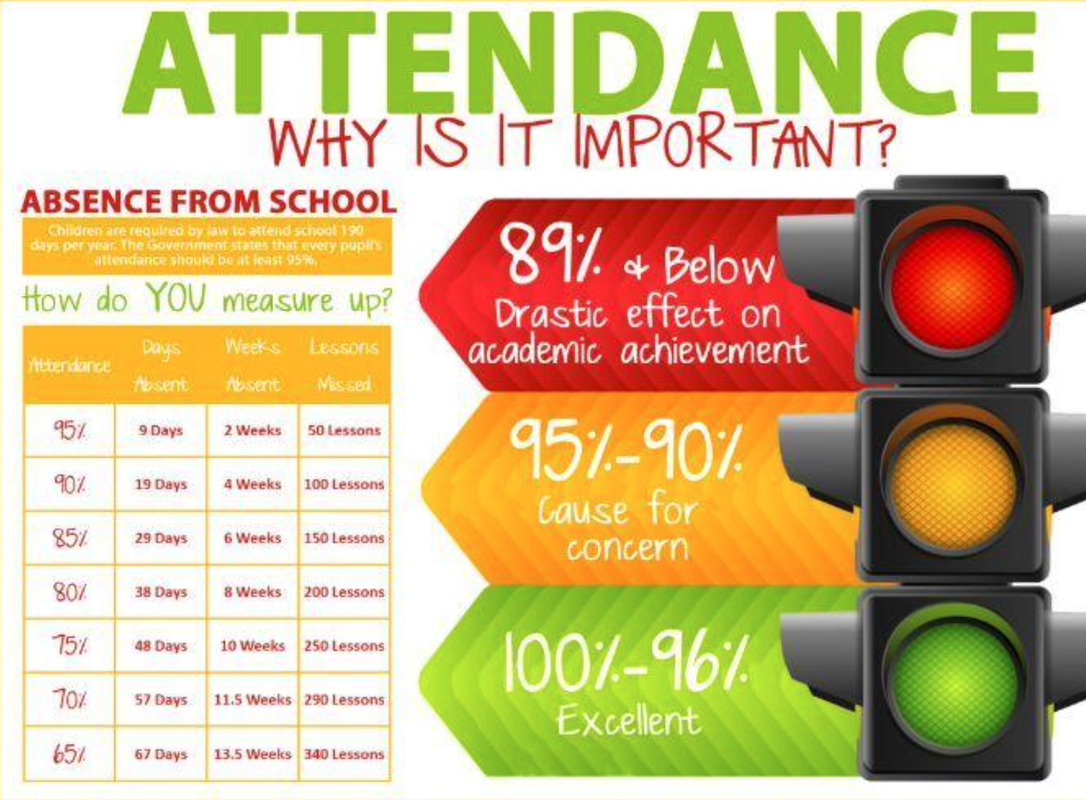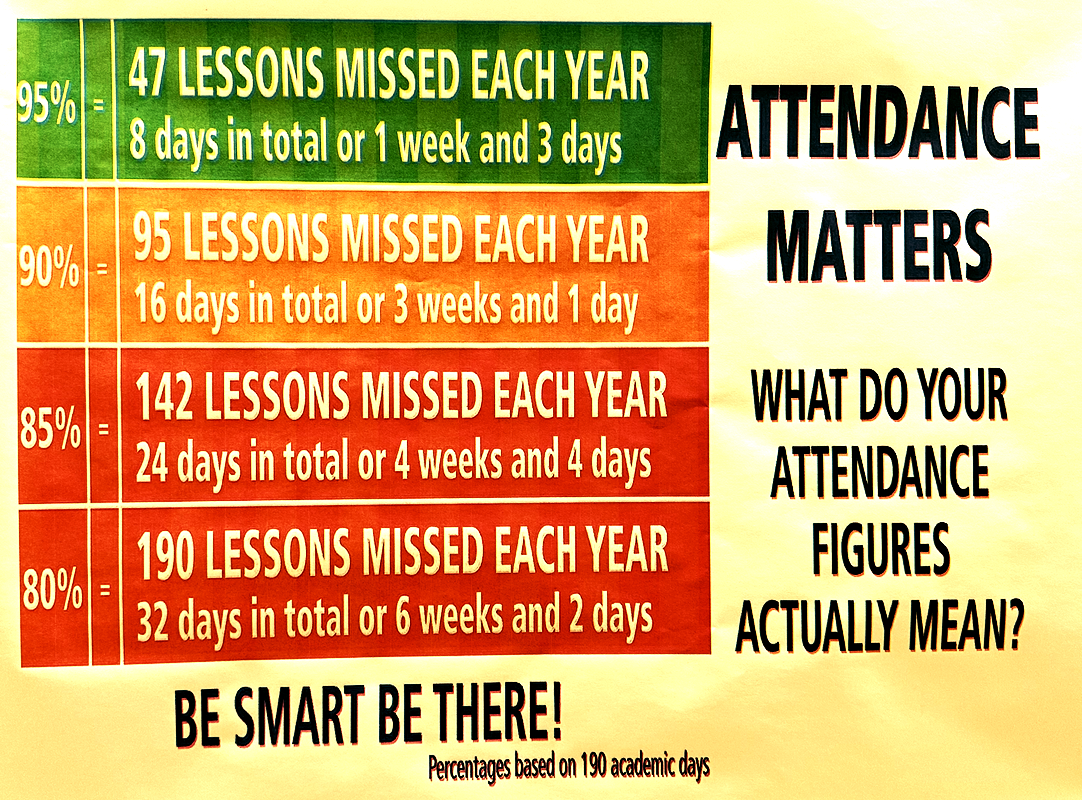The Importance of Regular Attendance in Middle School: Setting the Foundation for Success by ensuring consistent access to instruction, improving academic performance, developing social and emotional skills, and fostering responsibility and accountability.
Excellent attendance at school allows a child to have the best possible start in life.
There are lots of reasons why a child should attend school:
To learn
To build confidence and self-esteem
To understand responsibility
To develop new skills
To grow as individuals
To gain qualifications
To make new friends, have fun and develop life skills
To develop awareness of other cultures
Absenteeism in the first month of school can predict poor attendance throughout the school year. Half the students who miss 2-4 days in September go on to miss nearly a month of school.
Over 8 million U.S. students miss nearly a month of school each year.
Absenteeism and its ill effects start early. One in 10 kindergarten and first grade students are chronically absent.
Poor attendance can influence whether children read proficiently by the end of third grade or be held back.
By 6th grade, chronic absence becomes a leading indicator that astudent will drop out of high school.
Research shows that missing 10 percent of the school, or about 18days in most school districts, negatively affects a student’s academic performance. That’s just two days a month and that’s known as chronic absence.
Students who live in communities with high levels of poverty are four times more likely to be chronically absent than others often for reasons beyond their control, such as unstable housing, unreliable transportation and a lack of access to health care.
When students improve their attendance rates, they improve their academic prospects and chances for graduating.
Attendance improves when schools engage students and parents in positive ways and when schools provide mentors for chronically absent students.
A growing body of research is revealing the prevalence of chronic absence and its critical role in student achievement. Fortunately, research
is also showing that chronic absence can be addressed when school districts, communities, and policy makers work together to monitor the problem and implement solutions that address the underlying causes.
There are lots of reasons why a child should attend school:
To learn
To build confidence and self-esteem
To understand responsibility
To develop new skills
To grow as individuals
To gain qualifications
To make new friends, have fun and develop life skills
To develop awareness of other cultures
Absenteeism in the first month of school can predict poor attendance throughout the school year. Half the students who miss 2-4 days in September go on to miss nearly a month of school.
Over 8 million U.S. students miss nearly a month of school each year.
Absenteeism and its ill effects start early. One in 10 kindergarten and first grade students are chronically absent.
Poor attendance can influence whether children read proficiently by the end of third grade or be held back.
By 6th grade, chronic absence becomes a leading indicator that astudent will drop out of high school.
Research shows that missing 10 percent of the school, or about 18days in most school districts, negatively affects a student’s academic performance. That’s just two days a month and that’s known as chronic absence.
Students who live in communities with high levels of poverty are four times more likely to be chronically absent than others often for reasons beyond their control, such as unstable housing, unreliable transportation and a lack of access to health care.
When students improve their attendance rates, they improve their academic prospects and chances for graduating.
Attendance improves when schools engage students and parents in positive ways and when schools provide mentors for chronically absent students.
A growing body of research is revealing the prevalence of chronic absence and its critical role in student achievement. Fortunately, research
is also showing that chronic absence can be addressed when school districts, communities, and policy makers work together to monitor the problem and implement solutions that address the underlying causes.


